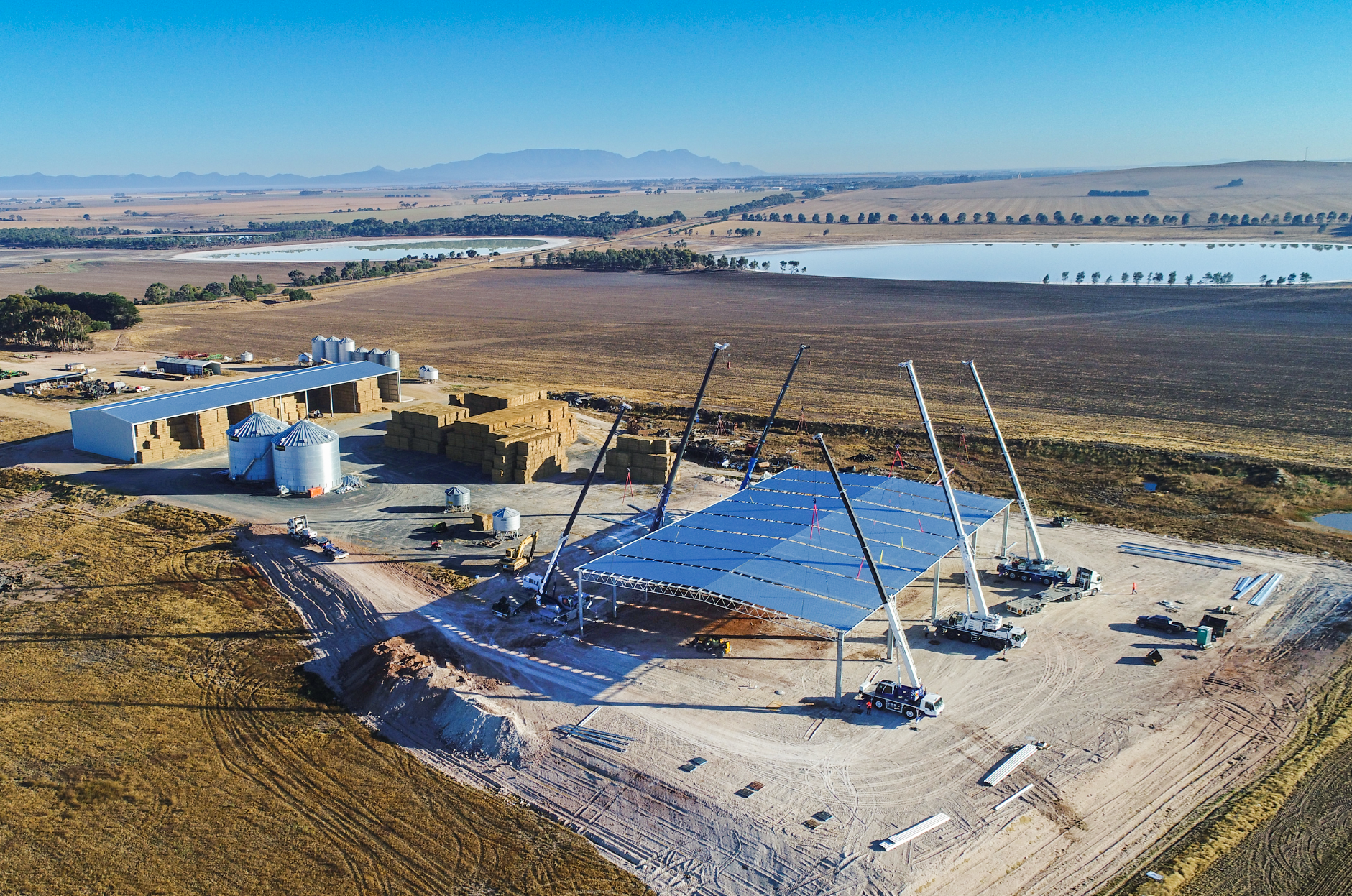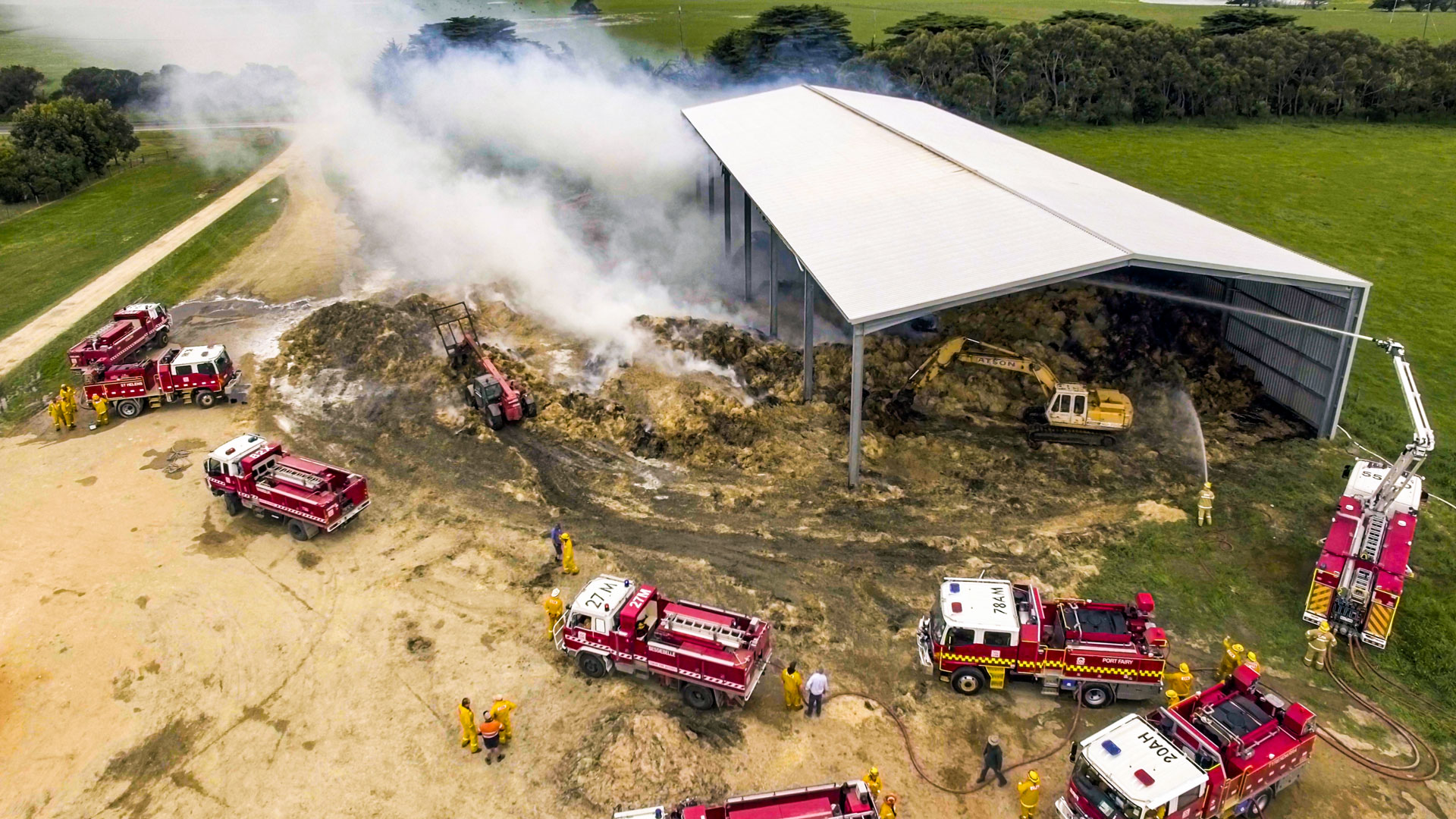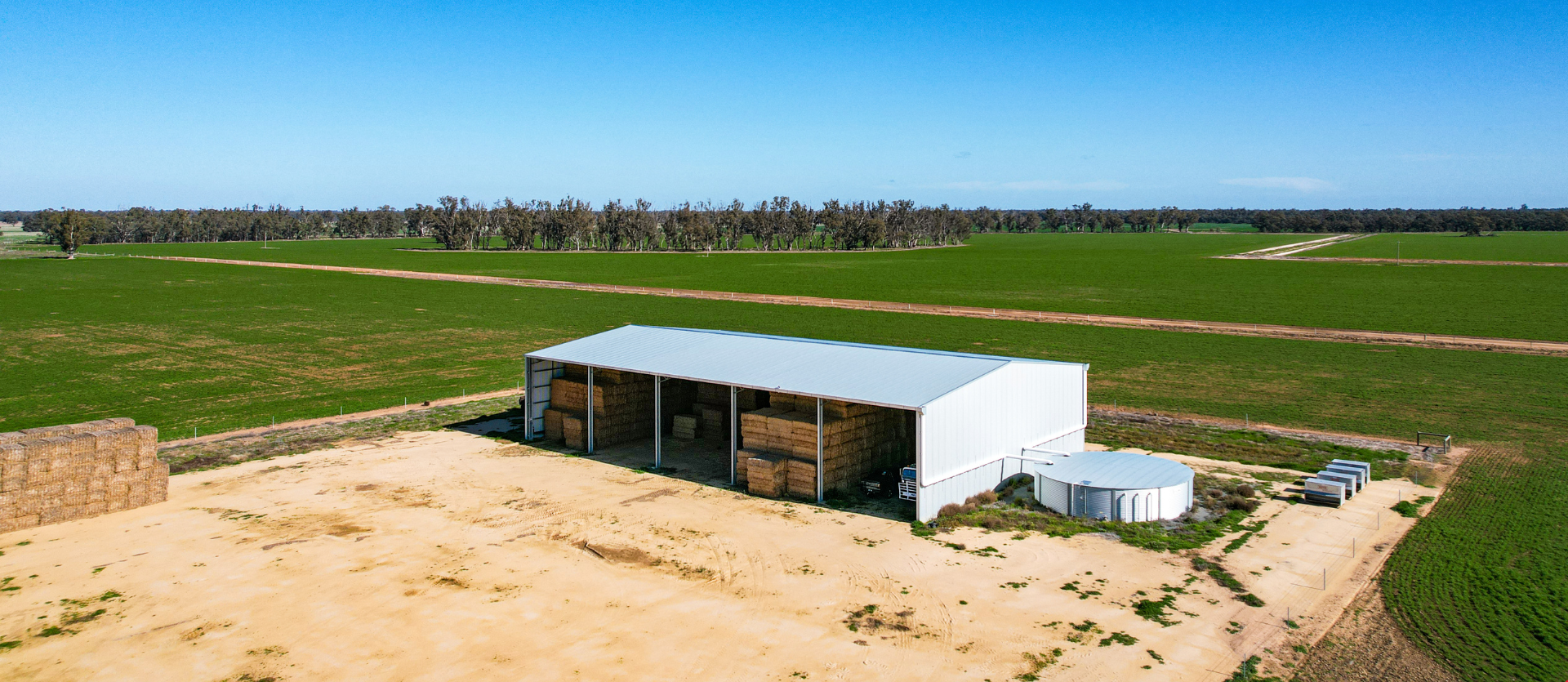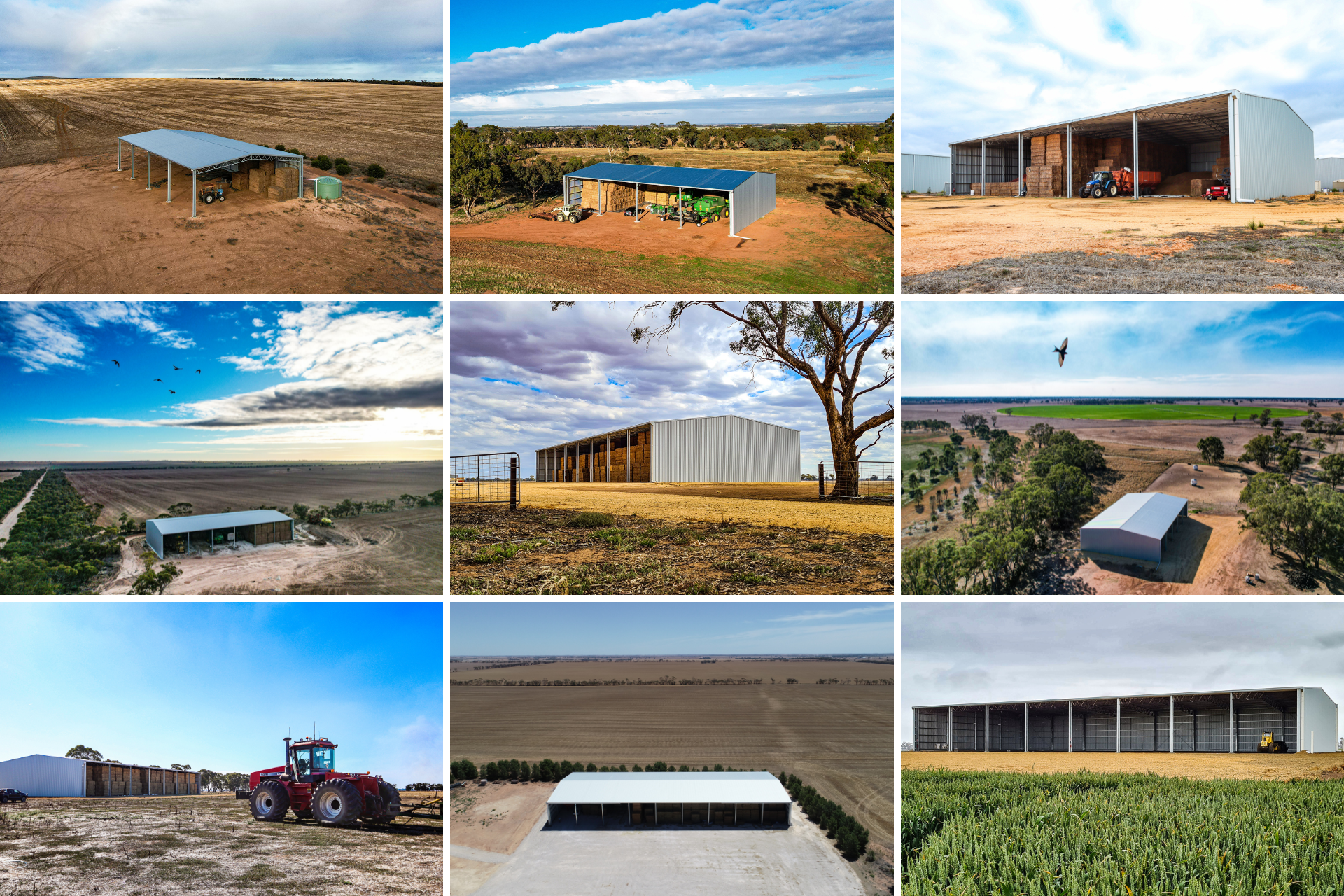Building a hay shed? A hay shed is an important investment as it plays a key role in protecting the quality and value of your hay. To ensure your new hay shed build does just that, it is essential to pay attention to the details – the more obvious ones such as hay shed size and design and the less obvious one such as site preparation and drainage.
To help you make an informed buying decision when purchasing your new hay shed, this article answers the top 10 questions we are asked about hay sheds in the sales process, ranging from hay shed sizes and hay shed prices to lead times and council permits.
So, if you are looking to buy a new hay shed, and you have a few questions, check out this list of commonly asked questions. And, don’t forget, our building consultants are always more than happy to discuss your project and answer any other questions you may have.
We’ll start with the most popular topic – hay shed prices.
1. How Much Does It Cost To Build A Hay Shed?
The average hay shed costs approx. $130,000 including GST, footing concrete and erection costs. This does depend on the shed size and design that you choose though.
Some popular hay shed sizes and their price guide are listed below:
- A three-sided ‘open-front’ 24 x 15m x 6m hay shed costs approx. $60,000 – $85,000.
- A three-sided ‘open-front’ 32m x 18m x 6m hay shed costs approx. $90,000 – $120,000.
- A three-sided ‘open-front’ 40m x 18m x 6m hay shed costs approx. $110,000 – 140,000.
- A three-sided ‘open-front’ 48m x 24m x 7.5m hay shed costs approx. $175,000 – $225,000.
- A three-sided ‘open-front’ 48m x 24m x 7.5m hay shed with 6 metre canopy costs approx. $210,000 – $260,000.
- A three-sided ‘open-front’ 64m x 24m x 7.5m hay shed costs approx. $225,000 – $280,000.
Please keep in mind that these prices are estimates only – if you would like a more accurate price for your hay shed project, request an obligation-free quote.
2. What Is The Most Cost-Effective Hay Shed Design?
A cost-effective hay shed design means you get the best value-for-money, or in other words “the greatest benefit is gained for a comparatively low price.” So, what is the most cost-effective way to build a hay shed?
There are a few factors to consider to ensure you get the most value for your money, these include spans, bay spacings, configurations and height.
The span width sizes in our standard range work out to be the most cost-effective for your shed, primarily because a new truss jig does not need to be specifically set up for your project. This minimises factory downtime and reduces the time your shed spends in the factory, therefore reducing production costs. Spans in this range include 15 metres, 18 metres, 21 metres and 24 metres – and go right up to 60 metres clear span!
When it comes to bay spacings for hay sheds, we usually recommend bay spacings of 8 metres – 8.5 metres as they are the most practical, storing three big square bales across and providing some ‘wriggle room’ when loading and unloading the shed. Generally, bay spacings of 8.5 metres are the more cost-effective option.
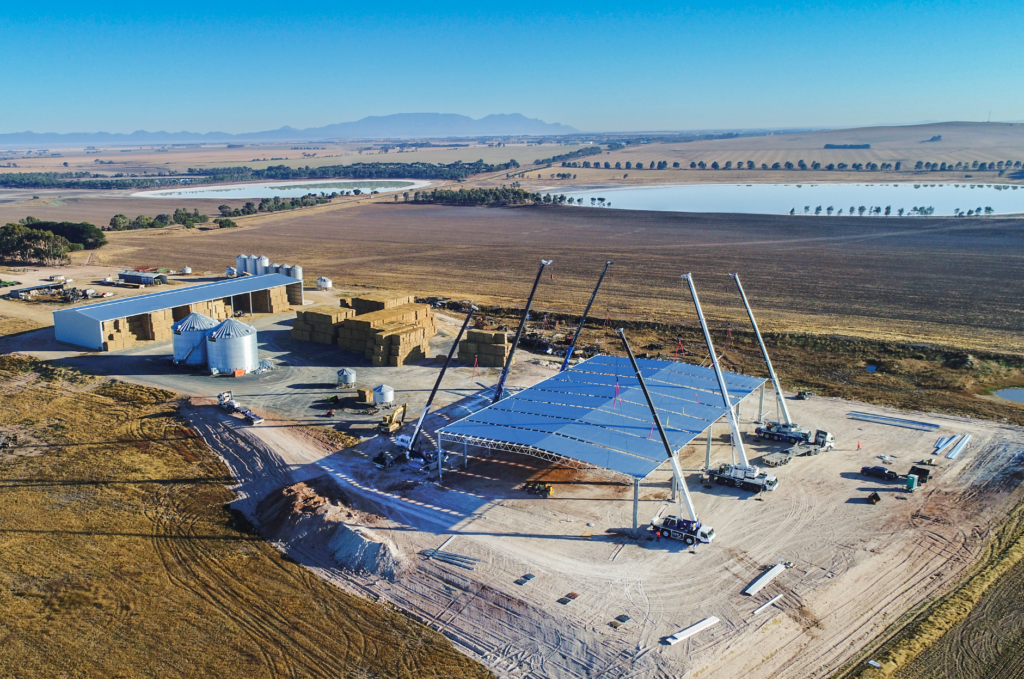
Configuration and height also determine the cost-effectiveness of a hay shed design. Typically speaking a longer shed rather than a wider shed is more cost-effective as it has a lower cost-per-bale. This is because a shed with a smaller span will take less time to fabricate and will not require as heavy steel as a wider span shed.
When it comes to shed height, increasing the height of your planned shed can be a cost-effective way to increase the storage capacity of your shed as only extra column and wall cladding length are required (as opposed to adding on an extra bay). Similarly, installing a canopy will increase the overall capacity of your hay shed, without adding significantly to the overall project cost.
So, that’s a few points to consider when building a hay shed and choosing your shed design.
3. What Size Hay Shed Do I Need? How Much Hay Will I Be Able To Store In My Shed?
Arguably one of the most important details of a hay shed project is capacity! A lack of adequate storage space can be incredibly frustrating and could cost you money.
If you are not sure what size hay shed you require to store your hay, simply fill out the details below in our hay shed calculator, and the calculator will provide the answer!
Hay Calculator
To help you determine the best shed size for storing hay, use this calculator.
Choose your bale type, and a few shed dimensions and the total number of bales stored will be shown in the last field.
4. Can I Claim My Hay Shed As A Tax Deduction?
There are several ways that you can claim your shed as a tax deduction, provided you meet all the requirements.
The first way is to take advantage of the full instant asset write-off for fodder storage assets such as silos, grain sheds and hay sheds. However, to qualify for this incentive the main purpose of the asset must be to store fodder for the farmer’s own livestock, amongst other requirements which you can learn about here.
If you hay shed does not qualify for the fodder storage asset write-off, you may be able to take advantage of Temporary Full Expensing which has been extended to the 30th June 2023. Temporary Full Expensing allows the full cost of any eligible asset to be written off. You can further information on this from the Australian Taxation Office, here.
Please note these comments are general only, speak to a qualified accountant before making any decisions.
5. Will My Hay Shed Project Need Council Permits?
The short answer to this question is – yes, your hay shed will more than likely require council permits, especially if the shed project is in Victoria.
In Victoria, council permits are required for the majority of farm sheds built including hay sheds. These include building permits, and in some cases planning permits as well.
Failure to get the required permits for your shed can be expensive with significant fines in place, not just for you but also for the registered builder on the project.
There are some exceptions and exemptions, though. Some local shire councils offer exemptions for farm shed projects under a certain size. Other shires where landholders have recently been affected by fire or flood, will waive the fee of required shed permits.
You can learn more about council permits and exemptions in this article – Can I Build A Shed Without A Permit? Or watch the video below to learn about the council permit process.
6. How Much Do Council Permits Cost?
The average cost of shed permits for sheds built by Action Steel in 2021 was approx. $2,600, however the cost of council permits does vary from project to project depending on the shed size and the local council.
Lester explains this in the video below.
7. Should I Install A Canopy On My Hay Shed? How Much Do They Cost?
As we have already mentioned, a canopy is a cost-effective way to increase the storage capacity of your hay shed – and that is not the only benefit of installing a canopy.
If you are considering including a canopy on your hay shed project, some of the other benefits to keep in mind include the additional weather protection for your hay and the ability to load and unload trucks under cover.
To budget for a canopy on your hay shed project, we recommend allowing about $90 – $120 per square metre.
8. Can I Build My Hay Shed Near The Boundary?
If the site you have in mind for your hay shed in near the boundary, in Victoria this will typically mean that a planning permit is required.
A planning permit will be required if the location of the shed does not comply with the required setbacks listed below:
- 20 metres off a local council road
- 100 metres off a main road (for example, a highway)
- 5 metres off a property boundary
- 100 metres away from a dwelling in a different ownership
- 100 metres away from a waterway
So, you can build your hay shed near the boundary, it just may mean some extra permit paperwork is required.
If you have any questions about planning permits, check out our article – What Is The Difference Between A Planning Permit & A Building Permit? – and remember, our team can manage the permit process for your shed project, form start to finish.
9. How Do I Prepare The Site For My Hay Shed?
A hay shed needs a good base and a well-drained site as poorly prepared sites can result in water finding its way into the shed and damaging hay. For this reason, we recommend building the shed up on a gravel pad to ensure drainage away from the shed.
In the video below, Ben outlines our top tips for preparing the ideal shed pad – remember, don’t underestimate the importance of a well-prepared shed site
10. What Is The Lead Time For A Hay Shed Build?
And last, but certainly not least – timeframes!
Our project schedule is regularly updated, and we determine time frames on a job-by-job basis so the lead time for a new hay shed build does vary from project to project. However, currently the average lead time for a new hay shed build is approximately four months.
So, that is the top 10 questions we are asked about building a hay shed, answered! Did we miss any? What other questions need answering? If you still have questions about your hay shed project, please do not hesitate to give us a call – we would be happy to help!
For more articles like this, check out our Learning Hub which includes all the latest farm shed resources.

